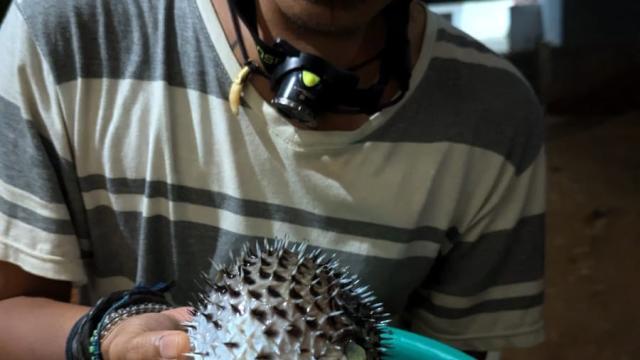
Image supplied: Hendri A.F. Kaharudin
Presented in person and online. Zoom details below.
Prehistoric Coastal Resource Dynamics in Island Southeast Asia
Wallacea’s complex island landscapes have shaped human subsistence strategies for at least 50,000 years, offering a key setting for examining long-term adaptations to coastal environments. Archaeological evidence from cave sites across ecologically distinct islands reveals how early populations responded to shifting marine ecosystems through diverse subsistence practices, including shellfish gathering, reef fishing, and deep-sea foraging. Technological innovations and mobility strategies played a crucial role in navigating environmental fluctuations, enabling resilience in dynamic coastal settings. This study integrates new excavation data with existing archaeological records to explore patterns of resource use, migration, and settlement across the Pleistocene–Holocene transition. By synthesizing archaeological, paleoenvironmental, and ethnographic perspectives, the research sheds light on the evolution of maritime adaptations in island Southeast Asia, demonstrating how early coastal communities managed ecological challenges through strategic innovations and inter-island connectivity.
Speaker:
Hendri A.F. Kaharudin is a PhD candidate in Archaeology and Natural History at the School of Culture, History & Language, ANU College of Asia and the Pacific. His research focuses on prehistoric archaeology in Indonesia, with an emphasis on Pleistocene-Holocene coastal and island subsistence in Island Southeast Asia. He has been actively involved in archaeological investigations, particularly in the Lesser Sunda Islands, and is broadly interested in human-environment interactions among early coastal communities.
Join via zoom: https://anu.zoom.us/j/84955848358?pwd=BlAgPRsbVdbBo9vrMB8mLEfcgz3FAo.1
Meeting ID: 849 5584 8358
Password: 602080
Presented as part of the School of Archaeology and Anthropology's 2025 Centre for Archaeological Research (CAR) Seminar series
Location
Speakers
- Hendri A.F. Kaharudin, ANU School of Culture, History and Language
Contact
- Anna Florin
File attachments
| Attachment | Size |
|---|---|
| CAR_Seminar_-_14-MAR-_HENDRI.pdf(253.63 KB) | 253.63 KB |